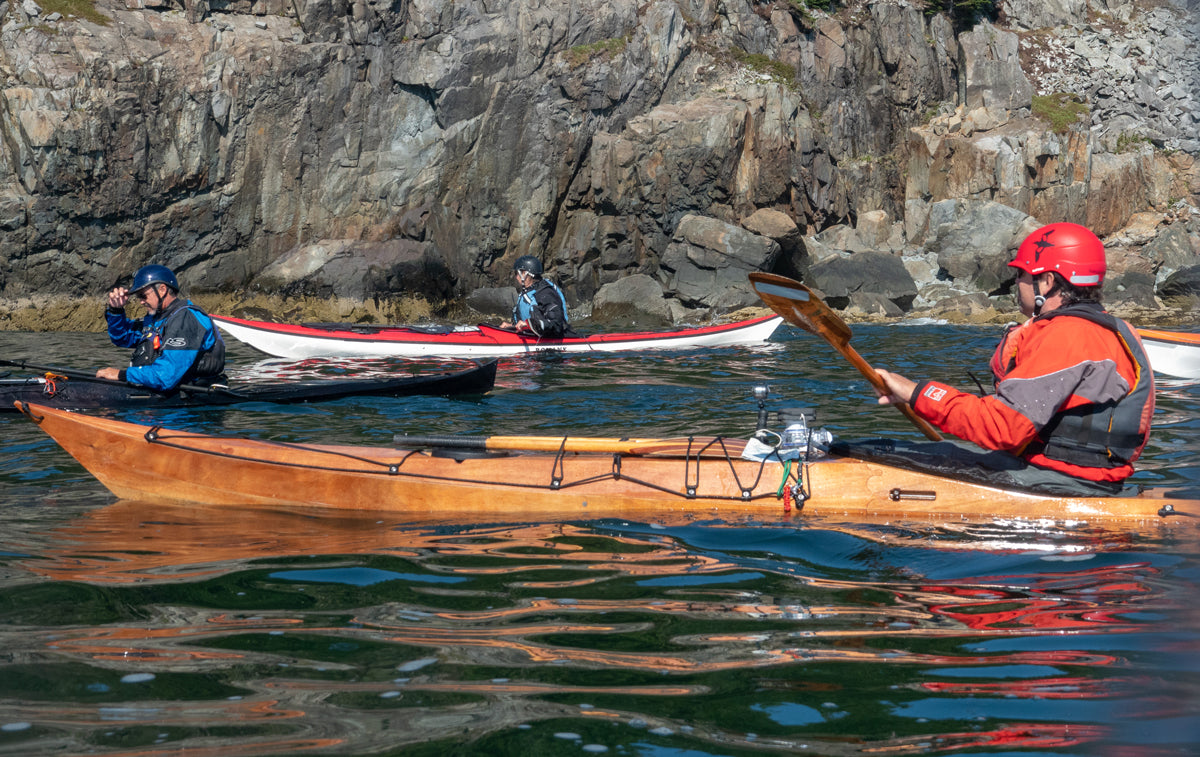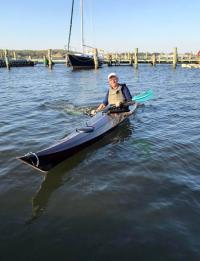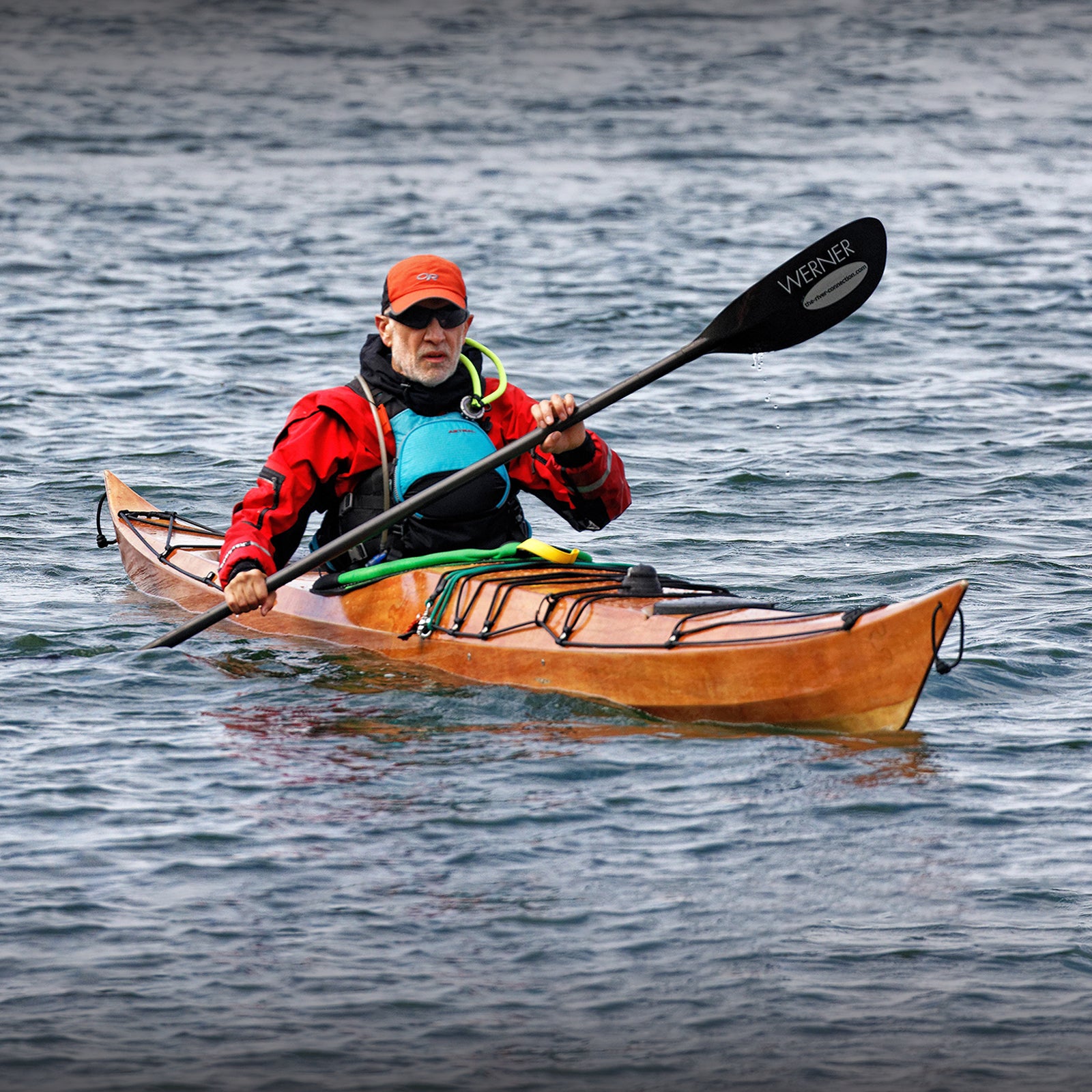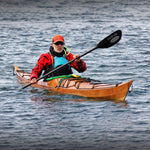Specifications
Performance
Stability
Speed
Cockpit Room
Payload
Ease of Construction

Overview
Nick Schade’s line of strip-planked Greenland-style sea kayaks are renowned for sophisticated performance on the water, beautiful lines, and sculptural hull details. But strip-planked boatbuilding is not for everyone. Novice woodworkers and weekend hobbyists with limited free time may be reluctant to take on the complex original Petrel kayak design. The solution is a plywood version of the 17-foot Petrel, designed with great deliberation to retain the strip-planked original's point-and-shoot handling.
The original Nick Schade Petrel design, a slippery 17' X 20" sea kayak equally at home as a fast cruiser or surfing in the break zone, is not a project for the timid boatbuilder. In that design, cedar strips enclose an undulating shape with functional "chines" that allow carved turns like a classic West Greenland kayak. "Great looks and handling, but requires an advanced builder," Nick Schade says.
The Petrel SG is the new stitch-and-glue version of the Petrel. It eliminates the fussy strip-planking procedure, which involves cutting and fitting scores of individual cedar strips over a mold. Instead, computer-cut plywood panels for the hull and deck are stitched together with wire, then reinforced with epoxy and fiberglass. The simplified plywood hull has its own sculptural qualities and loses none of the performance of the original.
While easier to build than it is to build a strip-planked kayak, we don't recommend the Petrel SG as a first-time boatbuilding project. A simpler stitch-and-glue boat or two, and a solid foundation in fiberglassing, is suggested before taking this on.
The Petrel SG offers features not found in any other kayak kit. Recessed Seadog hatches fore and aft, AND a recessed Seadog day hatch are standard. The cockpit is also recessed to make rolling easier. A retractable skeg is also standard in the kit.
“I’m excited at how it came out,” Schade says. “The Stitch-and-Glue Petrel is as faithful a reproduction of the original Petrel as I could manage in plywood.” Schade maintained the same profile and plan shape and reproduced the transitioning chine of the strip-planked Petrel with multiple chines forward tapering to a single hard chine behind. He also incorporated a retractable skeg and recessed hatches in the deck, including a day hatch behind the cockpit. "Puzzle joints"---one of Schade's signature design motifs---give the Petrel SG great artistic flair. "It is absolutely unique in the kayak kit world," Schade says.
Do you fit in this kayak? Study our kayak fit chart.

What builders are saying
Main Gallery
Construction Gallery
Line Drawings
Videos
Frequently Asked Questions
Take One of our Boatbuilding Classes
We offer classes for many of the boats we sell. Teaching sites stretch from Maryland to Washington State and from Maine to California. Click here to find out more.
View ClassesNeed Help Building it?
We’re here to help with any questions you might have during the build process.





























































